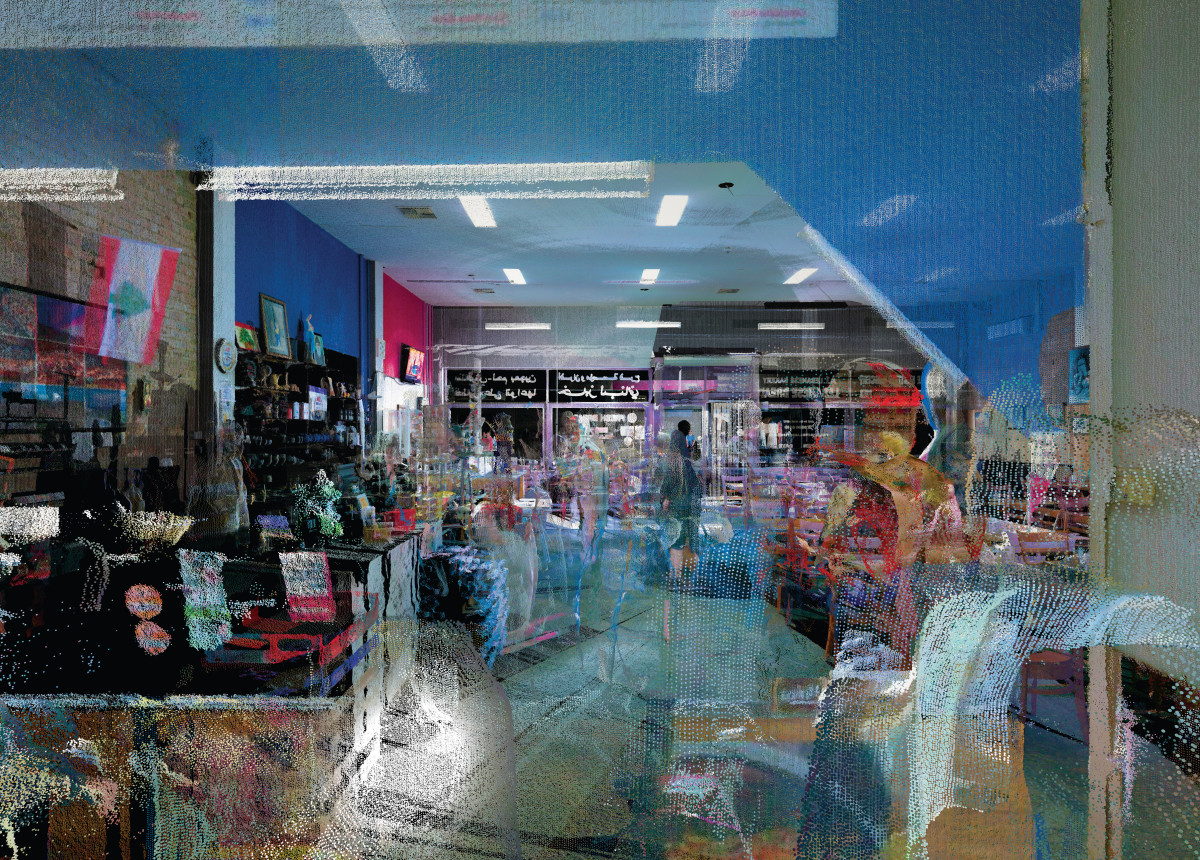Exhibits,
Naveed Farro There are terrestrial landscapes on my bed
Opening: Wednesday 1 May, 6-8pm Dates: 1 - 25 May 2024
There are terrestrial landscapes on my bed is a collection of point-cloud animations derived from LiDAR scans. The work explores psychogeographies of space and place in the inner northern suburbs of Narrm/Melbourne.
Roland Barthes famously wrote that “the nature of a photograph is not to represent but to memorialise.” What is the nature of a LiDAR scan? Multitudes, probably. We can only vaguely speculate on future uses of this technology. Farro’s scans of Vice and Brunswick offer one vision. The works are a perversion of the LiDAR scanner’s primary purpose—to replicate the exact spatial dimensions of an area. Instead, his practice is a memorialisation of peripheral suburban mundanity, one that runs in opposition to common uses of the technology, such as documenting a building site or a ruin of Great Historical Significance. In those scans, human presence is rendered important only in absence, in the service of the towering, depersonalised achievements of built longevity. In Terrestrial Landscapes, human presence is centred. The stills mutate against precision. Farro could remove the glitched figures with a tool designed exactly for that; he doesn’t. He could smooth over the warped negative spaces; he doesn’t. By fucking it up, or rather refusing to enact the illusory process of unfucking it up, Farro refutes the idea of technology as a tool of objective capture. Questions of accuracy are superseded by questions of epistemology.
This is an edited excerpt from Cameron Hurst’s 2020 text on the work, where she reflected on community, knowledge, data, and daddies.
You can read the essay in full here
Naveed Farro is an artist and filmmaker who is currently undertaking an MFA at Monash University of Art, Design and Architecture (MADA). He works across film, 3D media and installation to create immersive, affective screen encounters. Currently, he is interested in exploring how emerging imaging technologies, such as augmented reality smart glasses, can bridge gaps in access to spaces impacted by political unrest. Farro has a research background in film and the built environment, and also works as a Moving Image Designer at the National Gallery of Victoria.
